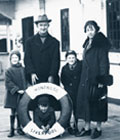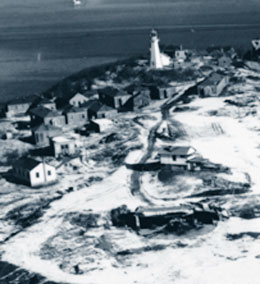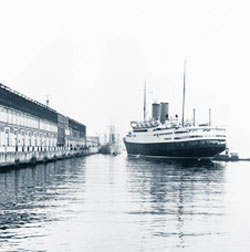Department
and Forms
Services
Sites
Regulations
and Statistics
Publications
| |
|
Milestones
of the 20th
Century |
|||
 Ontario immigration officers National Archives of Canada (RD 834) |
 Japanese coming ashore in Vancouver Selkirk College Library |
 New arrivals aboard the S.S. Montrose Canadian Pacific Limited (18393) |
 Hungarian children waiting in Quebec Canadian Immigration Historical Society (McFaul Collection) |
|
Our Cultural Heritage |
|||
| Throughout the 20th century, Canada has experienced a continuum of growth and diversification and has become stronger by virtue of immigration. We have opened our doors to countless immigrants and displaced persons from around the world and allowed them to find peace and stability. New Canadians have enriched our cultural heritage, and have helped make Canada the world's best country to live in. | |||
|
Sir Clifford Sifton |
|
|
|
Sir Clifford Sifton, Minister of the Interior from 1896 to 1905, opens up the West at the beginning of the 20th century with an offer of free land at a time when the United States is restricting immigration. This results in a larger number of immigrants from the United Kingdom, Europe and the United States and, in effect, the creation of our "Western Dominion." |
|
Gateway to Canada |
|
|
Halifax's Pier 21 opens in 1928 as the Atlantic gateway to Canada for more than 1.5 million immigrants in search of a new home and new land. During World War II, it serves as Canada's "East Coast Canadian Port." |
 Immigrants arriving in Canada Canadian Pacific Limited (3293) |
|
War Brides |
|
|
|
Approximately 48,000 war brides and their 22,000 children arrive in Canada during and after World War II. Their arrival marks the largest single wave of immigration since the Great Depression. |
|
Citizenship Act |
|
|
Canada becomes the first Commonwealth country to gain its own citizenship act when the Canadian Citizenship Act takes effect on January 1, 1947. Prior to that, Canadians were considered British subjects residing in Canada, not Canadian citizens. Prime Minister Mackenzie King had the honour of receiving the first citizenship certificate. |
 First citizenship ceremony National Archives of Canada (PA 197418) |
|
Hungarian Refugees |
|
|
|
Canada accepts 37,500 Hungarian refugees in 1956 and 1957 when the Soviets crush the Hungarian uprising. Normal immigration regulations are waived to allow officials to respond quickly to this emergency situation. |
|
1960s: A Decade of Change |
|
|
In 1962, new immigration regulations are tabled to eliminate all discrimination based on race, religion and national origin. In 1967, the government amends Canada's immigration policy and introduces the point system for immigration selection. This non-discriminatory policy evaluates independent immigrants on the basis of their ability to contribute to the Canadian economy. |
 Group of new citizens National Archives of Canada (PA 148771) |
|
Czechoslovakian Refugees |
|
|
|
In 1968 and 1969, Canada takes in 11,000 Czechoslovakian refugees who flee their homeland after the Warsaw Pact troops invade Prague. |
|
Ugandan Asians |
|
|
Canada resettles over 6,175 Ugandan Asians following President Idi Amin's August 5, 1972, order that some 80,000 Asians be expelled from Uganda within 90 days. |
 Immigrants at Entebbe Airport Roger St. Vincent Collection |
|
Chileans |
|
|
|
Following the 1973 coup d'État in Chile against the Allende government, over 6,000 Chileans flee to Canada. |
|
Partridge Island |
|
|
Partridge Island is designated as a national historic site in 1974. Nicknamed "Canada's Emerald Isle" to mark the presence of thousands who fled the Great Potato Famine in Ireland, it serves as North America's first quarantine station from 1785 to 1942. More than three million immigrants pass through the island en route to Saint John, New Brunswick, and a new life in North America. |
 Partridge Island National Archives of Canada (PA 108413) |
|
Indochinese |
|
|
|
Canada resettles almost 9,000 Indochinese from 1975 to 1978 after the fall of Saigon. Political, economic and social instability leads to the exodus to Canada of 60,000 Vietnamese, Cambodian and Laotian "boat people" in 1979 and 1980. Thousands of Canadians participate in the newly created private sponsorship program, thus allowing a greater number of refugees to come to Canada. |
|
Immigration Act of 1976 |
|
|
The Canadian Immigration Act, the cornerstone of present-day immigration policy, takes effect in 1976. The Act breaks new ground by spelling out the principles of Canadian immigration policy and imposing on the government the responsibility to plan immigration arrivals for the future. It also creates a separate class for refugees to distinguish them from immigrants, and establishes Canada's first refugee determination system. |
 Arms of Canada Mrs. Cathy Bursey-Sabourin |
|
Nansen Medal |
|
|
|
The United Nations High Commissioner for Refugees takes an unprecedented step in awarding the Nansen Medal to Canada in 1986 in recognition of the major contribution of the people of Canada to the cause of refugees. It was the first time that the medal was awarded to an entire nation. |
|
Grosse-Île |
|
|
The Historic Sites and Monuments Board of Canada designates Grosse-Île in Quebec as a national historic site in 1988. The island, which served as a quarantine station from 1832 to 1937, commemorates the bravery and devotion of the medical staff, the clergy and others who cared for the newcomers as well as the triumph of those who survived and helped to build this country. |
 Grosse-Île Association des travailleurs immigrants du Québec (92 592 11) |
|
Immigration and Refugee Board |
|
|
|
The Immigration and Refugee Board is created by an act of the Canadian Parliament in 1989. Its mission is "to make well-reasoned decisions on immigration and refugee matters, efficiently, fairly, and in accordance with the law." |
|
Canadian Immigration Service |
|
|
In 1994, Citizenship and Immigration Canada celebrates the 125th anniversary of the 1869 creation of the Canadian Immigration Service and the passage of the first Canadian Immigration Act. This anniversary is celebrated the same year the Department is created by an act of Parliament. |
 1869 Immigration badge logo |
|
50th Anniversary |
|
|
|
Citizenship and Immigration Canada celebrates the 50th anniversary of the Citizenship Act in 1997. The anniversary allows Canadians to reflect upon the principles and values they share as citizens, and their responsibilities toward their communities and each other. |
|
Pier 21 |
|
|
The Historic Sites and Monuments Board of Canada designates Pier 21 as a national historic site in 1998. Pier 21 serves as the point of entry for over 1.5 million immigrants from 1928 to 1971. Following a $9 million restoration project, the site reopens on July 1, 1999, as a tribute to Canada's immigrants. |
 Pier 21, Halifax Pier 21 Society |
|
Kosovo |
|
|
|
In response to an urgent appeal from Sadako Ogata, United Nations High Commissioner for Refugees, Canada evacuates and provides safe haven to more than 7,000 refugees from Kosovo forced to flee the Yugoslav regime in 1999. Thousands of Kosovars choose to resettle permanently in Canada. |
© Minister of Public
Works and Government Services Canada, 2000
Cat. no. Ci51-92/2000
ISBN 0-662-64969-9
July 2000
| Date Published: 2000-07 | Important Notices | ||